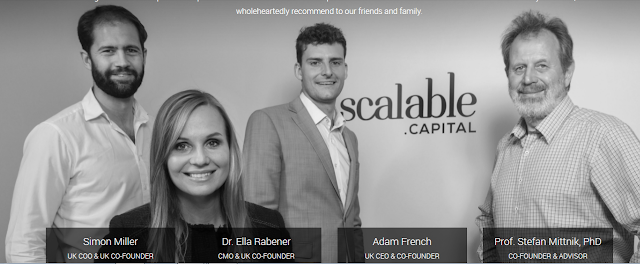How technology is changing the face of investing
Cloud computing can power more sophisticated data models that address the flaws of these outdated concepts and we have made it our goal to harness technology to deliver not just cheaper and more accessible, but also fundamentally better investing to savers.
What does Scalable Capital do?
We offer digital wealth management. We use technology to offer private clients access to portfolios that are managed with a risk management methodology that was previously only available to institutional investors. The power and cost-efficiency of cloud computing technology has allowed us to put these same institutional-style portfolios into the hands of everyone. We are able to make the step-change to mass-customized portfolios.
Risk management is at the heart of Scalable Capital's portfolio management. Can you briefly explain how it works and why it requires the use of cloud computing?
Every client's individual portfolio risk is continually and automatically monitored to make sure the portfolio stays in line with their individual risk category.
What sets us apart from others is the way in which we measure risk. We use a simulation framework which looks at current markets and the observed behavior of the different asset classes. It then uses large amounts of data to generate thousands of plausible performance scenarios, as the chart shows. Access to cloud computing enables us to run these simulations on a daily basis for thousands of client portfolios without having to charge high fees.
If more than 5 percent of the plausible paths end In a loss greater than the selected downside risk of a client, we move their portfolio allocation into more conservative assets. And vice versa If their portfolio is too conservative and might not give them enough exposure to the asset classes which historically delivered superior returns.
Does the investor know how much risk they are really taking?
Most wealth managers use vague terms for their risk categories, such as conservative', or 'balanced' We don't think these terms are sufficiently transparent. Instead, by using Value-at-Risk' (VaR), we quantify the concrete downside risk for each of our 23 risk categories. This means that if you choose the risk category with a VaR of 10 percent, there is a 95 percent probability that your portfolio will not lose more than 10 percent over the next year. This gives clients a much more accurate idea of their downside risk than the term 'conservative'.
Markets are unpredictable and sometimes very volatile. How do you ensure that a client's downside risk doesn't suddenly increase?
We use the latest capital markets research and sophisticated financial econometrics to calculate the downside risk (VaR) of every portfolio, every day. if the risk in a client's portfolio differs from that client's
individual risk category, we make adjustments.
Our approach differs to that of more traditional wealth managers. They rebalance portfolios periodically, back to the initial static weights which were defined when the client opened ttiek account. This ensures that the asset class weights remain constant over time, but it ignores the downside risk that the client faces. We believe that investors should not focus on asset class weights, instead we focus on risk as this is what ultimately drives returns over the long term.
How much does it cost to open an account with Scalable Capital?
Our annual fee is 0.75 percent of the value of the portfolio per year. This fee covers custody, trading and account management. On average, the ETFs in our client portfolios cost an extra 0.25 percent annually and this is charged directly out of the ETFs performance, Unlike some active managers, we do not have any hidden costs, commissions or exit charges.









No comments:
Post a Comment